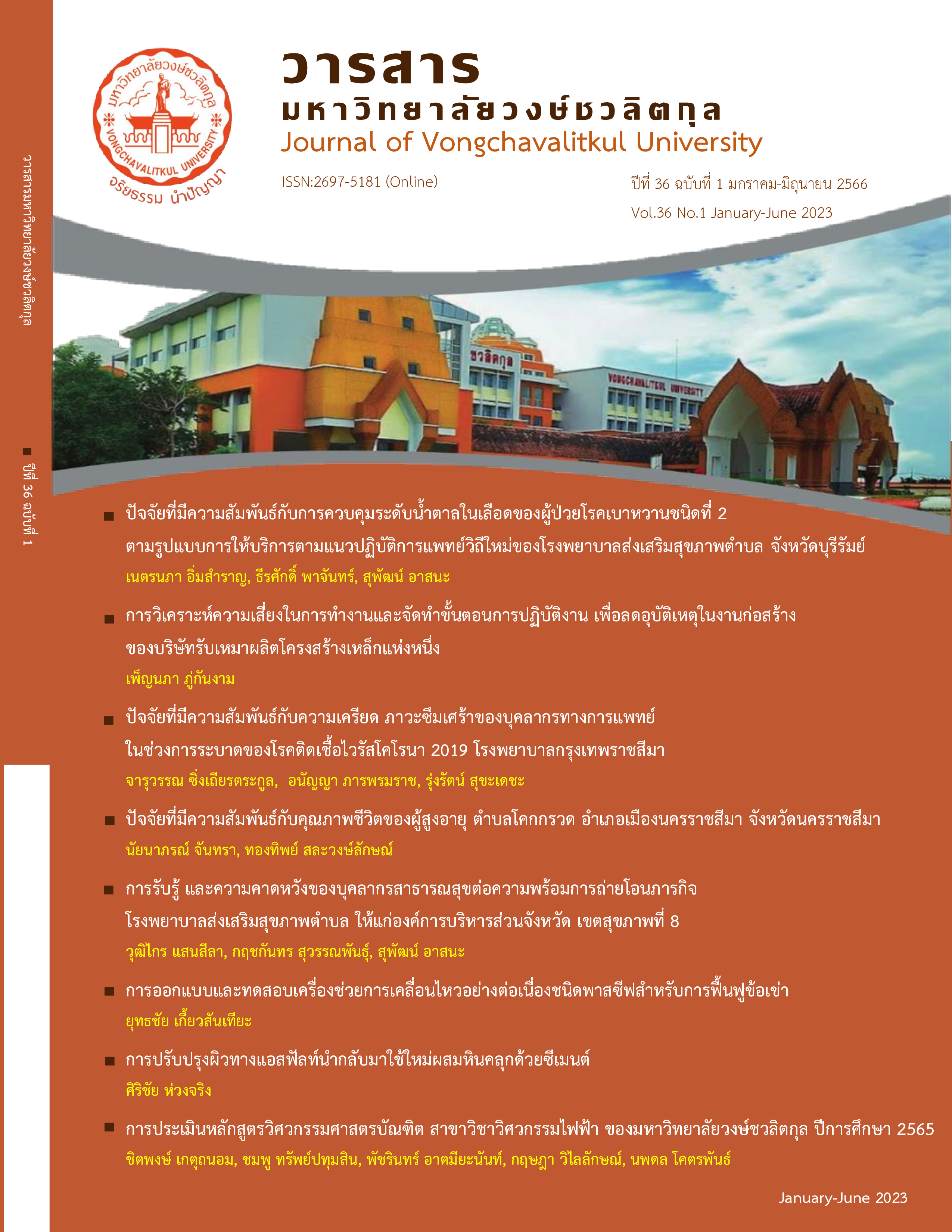Improvement of Reclaimed Asphalt Pavement with Crushed Rock Aggregate by Cement
Main Article Content
Abstract
Objective: To study the use of cement to improve the strength properties of reclaimed asphalt pavement with crushed rock without disposal for a guideline to reduce the process of preparing materials for road construction.
Methods: The ratio of the previous studies could not be applied because some of the fine aggregate was discarded from recycled materials. Therefore, this study had to adjust the ratio of mixed material using to the size distribution standard. Then it was used to prepare unconfined compressive strength and CBR samples to determine the appropriate amount of cement by modified compaction and using the water content at the maximum dry density, added 3, 5, 7, and 9 percent cement, tested at 3, 7, 14, and 28 days of curing times.
Results: Using a ratio of 1 to 3 mixed materials would optimize the mix size according to the standard criteria and used to prepare strength test samples using 6.7% water that gave the maximum dry density of 2.4 g/cm3. The non-cemented samples had an average compressive strength of 9.23 kg/cm2 and increasing cement in mix developed strength higher. The rates of increase strength curing 3-7 days will be higher than after 14 days for all cement volume ratio. Considering that at 7 days of curing, the average compressive strength was 17.63 and 25.00 kg/cm2 for cement content 3.0% and 7.5%, respectively, which was higher than the standard of the Department of Rural Roads and the Department of Highways at 17.5 and 24.5 kg/cm2. The CBR test results found that the 3% cement content sample had a CBR of 82.37%, was higher than the criteria set by both standards of 80%. The guideline to reuse of asphalt concrete surface materials without discarding materials mixed with crushed rock should be used in the ratio of 1: 3 and adding cement 3.0% and 7.5% for the strength of the material accordingly to the standards of pavement materials according to the standards set by the Department of Rural Roads and the Department of Highways, respectively.
Article Details

This work is licensed under a Creative Commons Attribution-NonCommercial-NoDerivatives 4.0 International License.
References
กรมทางหลวง. (2565, 18 กุมภาพันธ์). มาตรฐานงานทาง (ทล.-ม.) : ทล.-ม.203/2556, ทล.-ม.
/2564, ทล.-ม.410/2542. http://www.doh.go.th/content/page/page/5623
กรมทางหลวงชนบท. (2557). มาตรฐานวัสดุพื้นทาง : มทช.203-2557. https://research.drr.go.th/wp-content/uploads/2020/03/203-2557.pdf
กรมโยธาธิการและผังเมือง. (2557). มาตรฐานงานชั้นพื้นทาง : มยผ. 2117-57. http://subsites.dpt.go.th/edocument/images/pdf/sd_work/std2100.pdf
ชลัท ทิพากรเกียรติ. (2562). คุณสมบัติของวัสดุผิวทางที่นำกลับมาใช้ใหม่ในการออกแบบพาราสเรอลี่ซีล. วิศวกรรมสารเกษมบัณฑิต, 9(2), 183-200.
พงษ์พัฒน์ วังโน. (2560). การปรับปรุงคุณภาพผิวทางแอสฟัลต์คอนกรีตรีไซเคิลด้วยกากแคลเซียมคาร์ไบด์และเถ้าลอย. [วิทยานิพนธ์ปริญญาวิศวกรรมศาสตรมหาบัณฑิต มหาวิทยาลัยเทคโนโลยีสุรนารี]. http://sutir.sut.ac.th: 8080/sutir/bitstream/123456789/7977/2/Fulltext.pdf
สราวุธ จริตงาม, โอภาส สมใจนึก และพิษณุ ช่วยเวท. (2565, 24-26 สิงหาคม). การใช้แอสฟัลท์คอตกรีตเก่า ผสมกับหินคลุกและซีเมนต์ในงานก่อสร้างถนน. การประชุมวิชาการวิศวกรรมโยธาแห่งชาติ ครั้งที่ 27: เรื่องวิศวกรรมโยธาเพื่อความเข้มแข็งของชุมชน (INF04-1-5). เชียงราย: มหาวิทยาลัยพะเยา. https://conference.thaince.org/ index.php/ncce27/article/view/1711
อัคคพัฒน์ สว่างสุรีย์, ธีรภัทร์ ศิริรัตนฉัตร และ จิรโรจน์ ศุกลรัตน์. (2561). การศึกษาประเมินสมการทำนายค่ากำลังรับแรงอัดของวัสดุสร้างทางผสมซีเมนต์.
วิศวกรรมสาร มก. 31(103), 65-76. https://ph01.tci-thaijo.org/index. php/kuengj/article/view/145469/ 107447
อาทิตย์ อินทรา. (2556). อิทธิพลปริมาณผิวทางแอสฟัลต์ติกคอนกรีตที่นำกลับมาใช้ใหม่ต่อกำลังอัดของวัสดุชั้นพื้นทางที่ปรับปรุงด้วยปูนซีเมนต์. [วิทยานิพนธ์
ปริญญาวิศวกรรมศาสตรมหาบัณฑิต มหาวิทยาลัยเทคโนโลยีสุรนารี]. http://sutir.sut.ac.th:8080/jspui/bitst ream/123456789/4767/2/Fulltext.pdf
Al-Qadi, I. L., Elseifi, M., & Carpenter, S. H. (2007). Reclaimed asphalt pavement – A literature review. Illinois Center for Transportation, Research Report FHWA-ICT-07-001. https://www.ideals.illinois.edu/ items/46016
Federal Highway Administration. (1997). Reclaimed Asphalt Pavement-User Guidelines for Waste and Byproduct Materials in Pavement Construction. (Research Report FHWA-RD-97-148). Washington, DC: U.S.
Plati, C., Tsakoumaki, M., & Gkyrtis, K. (2023). Physical and Mechanical Properties of Reclaimed Asphalt Pavement (RAP) Incorporated into Unbound Pavement Layers. Applied Science, 13(1), 362. https://doi.org/10.3390/app13010362
Ullah, S., Tanyu, B. F., & Hoppe, E. J. (2018). Optimizing the Gradation of Fine Processed Reclaimed Asphalt Pavement and Aggregate Blends for Unbound Base Courses. Transportation Research Record: Journal of the Transportation Research Board, 2672(52), 57-66. https://doi.org/10.1177/0361198118758683


